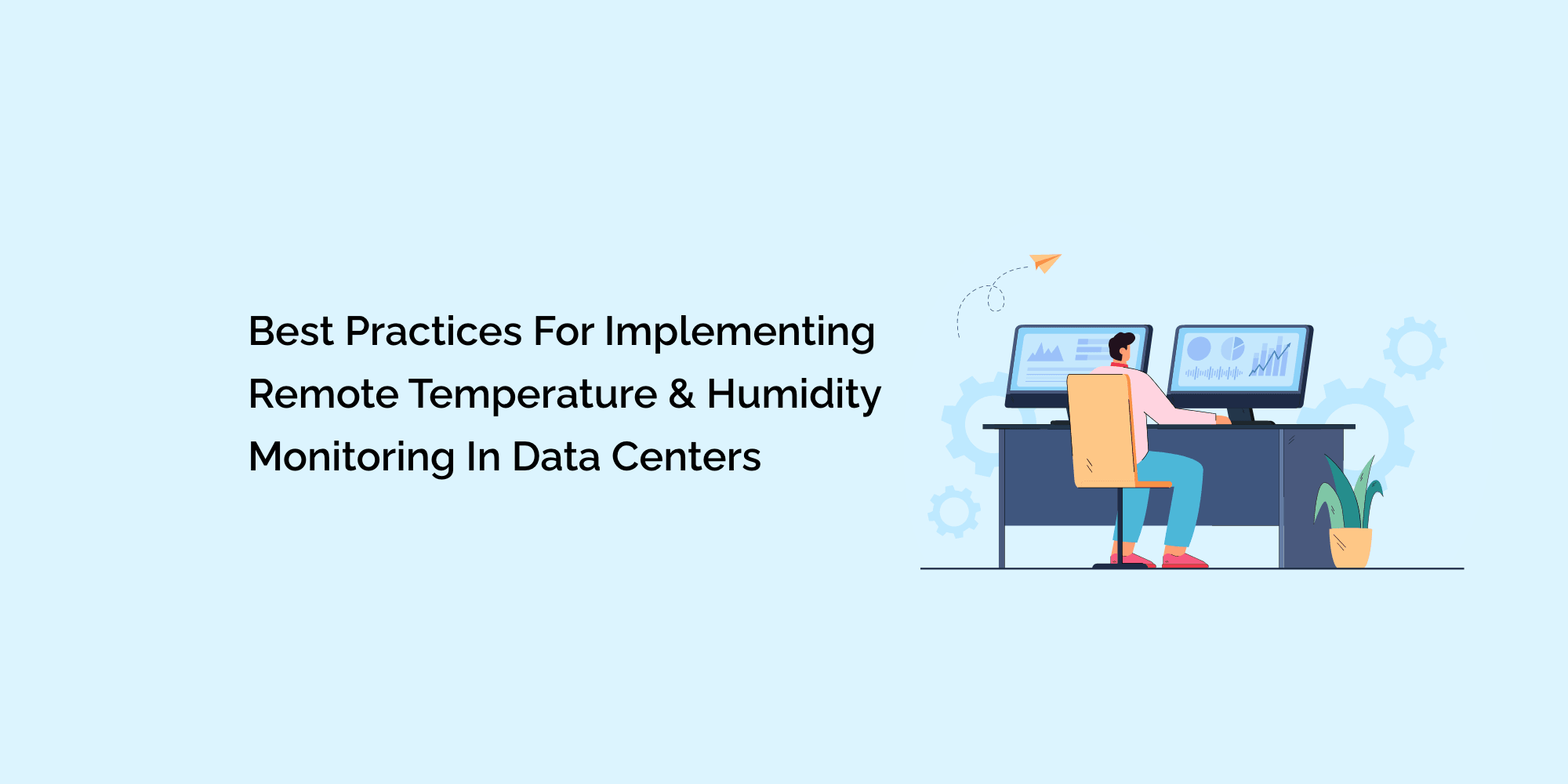In today's technology-driven world, data centers play a critical role in storing and processing vast amounts of information. To ensure the optimal performance and reliability of data centers, monitoring environmental conditions such as temperature and humidity is crucial. Remote monitoring solutions offer a powerful way to gather real-time data and proactively address issues that could affect equipment performance and data integrity. This blog explores the best practices for implementing remote temperature and humidity monitoring in data centers, providing valuable insights for data center operators and managers.
Understand Your Monitoring Needs
Before implementing remote monitoring, assessing your data center's specific monitoring needs is essential. Consider factors such as the facility's size, the equipment's criticality, and any regulatory requirements. This section highlights the importance of conducting a comprehensive analysis to identify the areas that require temperature and humidity monitoring and determine the desired granularity of data collection.
Select Reliable Sensors and Equipment
Choosing reliable sensors and monitoring equipment is crucial for accurate data collection. Look for sensors that offer high precision, wide measurement ranges, and robust performance. Consider factors like sensor placement, compatibility with your data center infrastructure, and the ability to integrate with remote monitoring systems. This section guides selecting suitable sensors and equipment for reliable and consistent monitoring.
Strategic Sensor Placement
Proper sensor placement is critical to obtaining accurate temperature and humidity readings. This section discusses the strategic placement of sensors in critical areas such as server racks, air vents, and cooling systems. It highlights the significance of considering airflow patterns, potential heat sources, and areas prone to humidity fluctuations. A well-planned sensor placement strategy ensures comprehensive coverage and reliable data collection.
Implement Secure Data Transmission
Securing temperature and humidity data transmission is vital to protect sensitive information. This section explores the importance of using secure data-transmission protocols, such as encrypted connections and virtual private networks (VPNs). It also emphasizes the need for proper access controls and authentication mechanisms to ensure that only authorized personnel can access the monitoring system.
Establish Thresholds and Alerts
Defining temperature and humidity thresholds is crucial for effective monitoring. Set appropriate threshold values based on industry standards and equipment specifications. This section explains the importance of defining both warning and critical alert levels. It also emphasizes the significance of configuring automated alert notifications to promptly notify the appropriate personnel in case of deviations from the desired conditions.
Implement Data Visualization and Analytics
Data visualization and analytics tools are vital in deriving valuable insights from the collected data. This section discusses the importance of implementing user-friendly dashboards and visualization tools to monitor and analyze temperature and humidity trends over time. It also highlights the potential of advanced analytics techniques, such as machine learning, to identify patterns and anomalies for proactive decision-making.
Integrate with Data Center Management Systems
Integrating remote monitoring systems with existing data center management systems, such as Data Center Infrastructure Management (DCIM) software, can provide a holistic view of the data center environment. This section explores the benefits of integration, including centralized monitoring, streamlined workflows, and enhanced reporting capabilities. It also highlights the importance of seamless integration to ensure smooth data exchange and interoperability.
Regular Maintenance and Calibration
Regular maintenance and calibration of sensors are essential to ensure accurate and reliable monitoring. This section emphasizes the importance of adhering to the manufacturer's guidelines for sensor maintenance, including regular cleaning, calibration, and replacement when necessary. It also highlights the significance of periodic system checks to ensure the overall functionality of the remote monitoring solution.
Training and Documentation
Training data center staff on properly using remote monitoring systems is crucial for effective implementation. This section emphasizes the importance of providing comprehensive training sessions to familiarize staff with the system's features, data interpretation, and troubleshooting procedures. Additionally, documentation of the monitoring processes, standard operating procedures, and maintenance logs should be maintained for future reference.
Continuous Evaluation and Improvement
The implementation of remote temperature and humidity monitoring should be an ongoing process. Regularly evaluate the system's effectiveness, identify improvement areas, and implement necessary changes. This section emphasizes the importance of continuous evaluation, feedback collection from users, and staying updated with industry best practices and advancements.
Certainly! Here are some frequently asked questions (FAQs) about implementing remote temperature and humidity monitoring in data centers:
What is remote temperature and humidity monitoring in data centers?
Remote temperature and humidity monitoring in data centers refers to using sensors and monitoring systems to collect real-time data on environmental conditions. This data is accessed and analyzed remotely, allowing data center operators to monitor and manage temperature and humidity levels from a centralized location.
Why is remote monitoring critical in data centers?
Remote monitoring is essential in data centers because it gives operators continuous visibility into temperature and humidity levels. This helps detect and address potential issues that could affect the performance and reliability of critical IT infrastructure components, such as servers and networking equipment.
Conclusion
Implementing remote temperature and humidity monitoring in data centers is essential for maintaining optimal environmental conditions and ensuring the performance and reliability of critical equipment. By following the best practices outlined in this blog, data center operators can leverage remote monitoring solutions to proactively detect issues, make informed decisions, and optimize the overall operational efficiency of their data centers. Remember to evaluate the system continually, keep staff trained, and stay knowledgeable about the latest advancements in remote monitoring technology to enhance your data center monitoring capabilities constantly.








